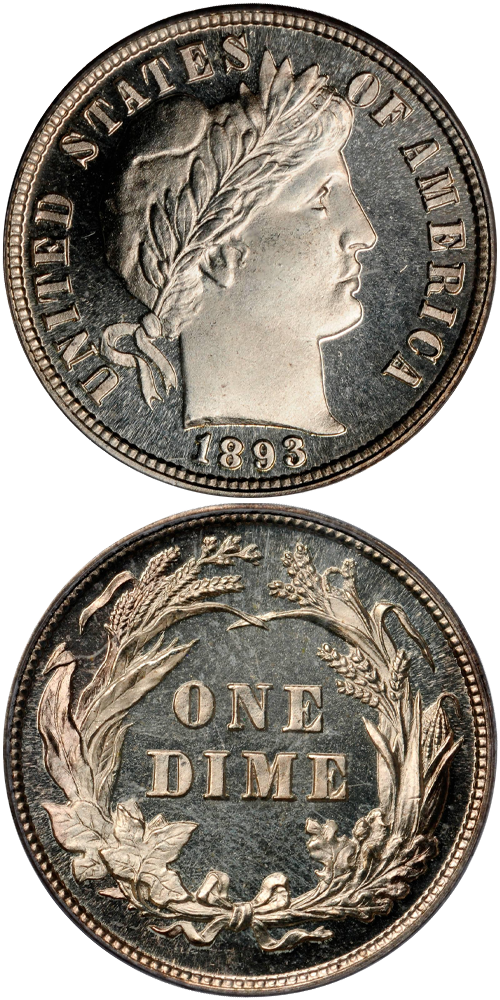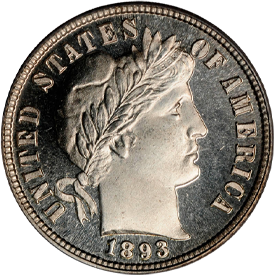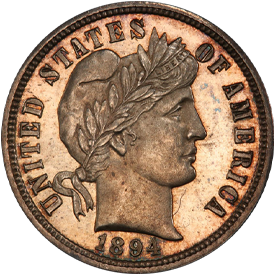Designed by: Charles E. Barber
Issue Dates: 1892-1915
Composition: 90% silver, 10% copper
Diameter: 17.9 mm
Weight: 2.50 grams (38.58 grains)
Edge: Reeded
Proof Mintage: 17,353
Proof Barber dimes were produced at the Philadelphia Mint for all years from 1892 through 1915 (but not 1916). Among Proof issues, 1914 (with a reported mintage of just 425 pieces) is the rarest. Close on its heels is the 1915, of which just 450 were struck. Slightly higher-priced at one time was the 1895, not because it is extremely rare (880 Proofs were made, an average mintage for a Proof of the era), but because regular issues (business strikes) of this date are rare. Years ago, the 1895 Proof was priced at multiples of other Proofs. In recent years the demand for Barber coins as types, rather than as dates, has leveled out the pricing structure, and the 1895 is scarcely noticed as being different. As a consequence of the current “type” status of this issue, all dates are valued about the same.
There is however, one super-rarity among Barber dimes, the 1894-S, of which only 24 pieces were coined. There are two main versions of why only a few were made. The first has it that 24 pieces were struck for die testing purposes, with the anticipation that a larger coinage would come later. The anticipated larger coinage never materialized. The second story goes that at the end of the year 1894 there was a shortage in the coining account books of $2.40, so 24 pieces were struck in order to make the account come out even.
Whichever story is true, the 1894-S is one of the stellar rarities in American coinage. Only about a dozen specimens can be traced with certainty today, and the Guidebook, as well as both PCGS and NGC list them as Branch Mint Proofs. Certainly, the Mint director knew that rarities were being produced, for his daughter, Hallie Daggett, retained two specimens, and sold them in later years to San Francisco dealer Earl Parker.
The majority of Proof Barber dimes today fall into the range of PR-63 to PR-65. However, if one’s sights are set on a PR-66 or 67, an example should not prove difficult to locate. It is not until PR-68 until the coins become somewhat elusive, but even in this grade, they cannot be called “rare” as over 200 certified examples are extant. Not until PR-69 do they become rare.
Cameos are found on between 15% and 20% of the certified pieces, and Deep or Ultra Cameos on only around 1% or so. Collectors searching for a Choice PR-62-64 coin can find them in the mid to upper three-figure range, a Gem 65 or 66 will cost in the $1,000 to $1,500 range and be prepared to spend $2,500 to $3,500 for a nice PR-67. Cameo contrast will carry a 50% to 200% premium depending on the depth.








